Legendary "Zero"
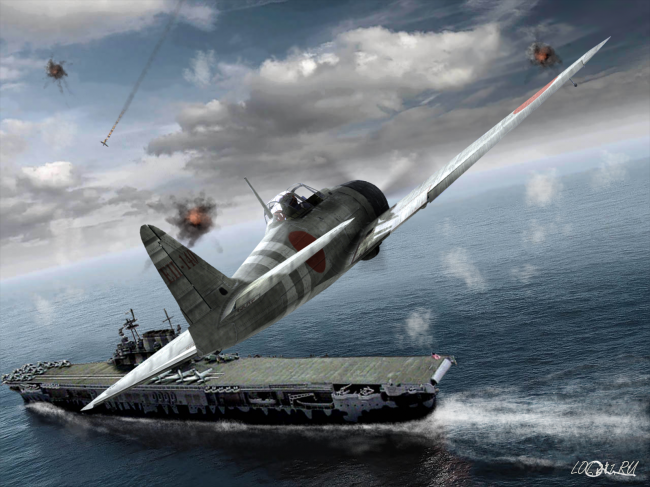
"My fighter was like a sword for a samurai for me. I felt it as my own body," one Japanese pilot wrote about the most famous fighter of the Land of the Rising Sun. "You will not find anything more serious than linen biplanes," said the Allied air force leaders on the eve of the war in the Pacific.
Underestimation of Japanese cars cost many American and English pilots their lives, because from the first moments of the Pacific massacre they had to fight with the Mitsubishi A6M fighter, better known as the Zero. This excellent aircraft has become one of the main symbols of the past war. From the strike on Pearl Harbor to the end of the Second World War, this aircraft took an active part in almost all of the air battles of the Japanese fleet. Its amazing maneuverability and enormous range of flight went into history. During the first year of the Pacific War, the Mitsubishi fighter A6M had no equal.
This fighter from the time of design promised to be very promising. When in 1937, designers began developing a new marine aircraft with retractable landing gear, there were only two such serial combat vehicles in the world. The I-16 was already being built in full swing in the USSR, and the Bf-109 was flying in Germany. Japan, dreaming of a redistribution of borders on the Pacific Ocean, also needed a modern fighter for the sea aviation, which, in addition to ground bases, could be used with aircraft carriers.
In May, the Japanese naval aviation headquarters of 1937 developed the requirements for a new fighter that was not inferior in A5M maneuverability and significantly surpass it in speed. The competition was first attended by two firms - Mitsubishi and Nakajima. But rather quickly, Nakajima dropped out of the competition and the Mitsubishi designers continued to work alone. He headed the aviation design company 34-year-old Yiro Horikoshi. After reviewing the requirements of the military, Horikoshi made the main bet on the maximum relief of the aircraft - the only way to get high flight performance. In accordance with the traditions of the Japanese aircraft industry, the booking of the pilot and the protection of the tanks were not provided for, which saved a few dozen kilograms.
According to the requirements of the military, for the first time a Japanese fighter received weapons. Two 20-mm guns, manufactured in Japan under the license of the Swiss company "Oerlikon", stood in the wing at the main landing gear. A pair of 7,7-mm synchronous machine guns - above the power plant. One of the main issues in the design was the choice of engine. The best option for the fighter was the 14-cylinder double-row "star" of the Nakajima company, the Sakae 12, and the HP 940 power. However, the leadership of "Mitsubishi" almost forced Horikoshi to choose a motor of his own company. Powerful two-row "star" "Kinsey 46" developed on take-off 1000 hp, but the designers were skeptical of the large weight and size of the engine. As an alternative, I had to be content with a less heavy, but also less powerful “XUUM 13” in 875 HP. Horikoshi hoped that the lack of power was compensated by the small weight of the motor and its small diameter.
Work on the fighter began in April 1938-th. Soon the military was introduced to a full-scale wooden layout. After reviewing it, no major additions were made, and Mitsubishi’s engineers began building two prototypes.
In March, the 1939 of the year, under the long designation "Experienced fleet fighter that meets the requirements of 12-Shee" (A6М1), was rolled out of the workshop. And in April, Catsuzo Shima first took off on an experienced fighter into the air. Chassis cleaning was tested only on the 13-m flight. However, with the release of the main racks faced with vibrations that occur in some modes of engine operation. Later they got rid of shaking by installing rubber dampers on the motor attachment points. The two-bladed wooden screw was replaced with a three-bladed variable pitch, manufactured under license from the American firm Hamilton Standard. The rest of the plane liked the test pilots, although its speed was less than expected. With the ZUXY 13 motor and the three-bladed propeller, the first A6М1 developed to 490 km / h on 3000 m, which is 10 km / h below the target. In addition, on the prototype there was no armament, and the speed of a fully equipped vehicle would be even lower. I had to replace the motor with "Sakai 12".
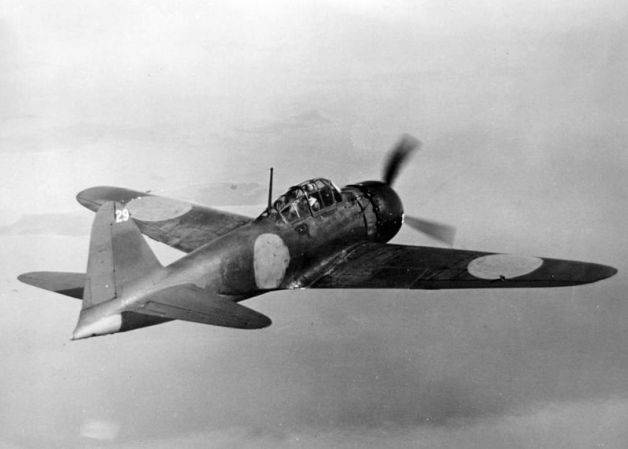
However, the second prototype A6М1 first flew in October 1939, also with the ZUX 13 engine. The aircraft was used to test weapons in the air and crashed 11 March 1940 of the year, without leaving the dive. The probable cause of the accident was the insufficient strength of the lightweight wing.
Two prototypes of А6М2 were followed by an order for pre-production vehicles with Sakai 12 engines. During tests of prototypes in some modes, the elevator flutter was noted - it was necessary to change the design of the balancing weights and modify the tail. Due to the new engine, the length of the fighter increased from 8,74 m to 9,06 m.
While preparing for the release of pre-production aircraft, in September 1939 of the year began troop tests А6М1. The pilots from the special squad enthusiastically greeted the new fighter. The greatest dispute among the pilots was caused by a fully enclosed lantern. Accustomed to biplanes "blown by all winds", the more elderly pilots called such an innovation unnecessary and harmful. But there could be no return to the past - it’s impossible to build a high-speed fighter without a streamlined lantern.
Since there was already a war in China, and Japan did not have fighter jets to escort bomber on long-haul flights, the naval aviation headquarters decided to urgently test the new machine in real combat missions. The first six pre-series А6М2 arrived in China in July 1940 of the year, joining the 12-th mixed air group.
At the same time, troop tests were successfully continued, including the program of flights from the aircraft carrier Kaga. And at the end of July, the aircraft was officially adopted by the fleet aviation under the designation “Sea carrier-based fighter Type 0 Model 11”. The number "0" in the designation indicates the year of enrollment in the military service -1940. In English, “zero” sounds like “Zero” - and in the future it was under this name that the fighter became known from the Allied pilots. The first six A6M 2 in China were soon joined by nine more.
His first sortie "Zero" made in August. On this day, 12А6М2 was accompanied by bombers in a raid on Chunkin. True, on a long-distance route in 1500 km, Chinese fighters did not meet. But the mere fact of escorting bombers to such a distance was a great achievement - at that time no other fighter in the world could perform such a task. Hold in the air for a long time, “Zero” allowed ventral discharged fuel tank (330 l). The Japanese were leaders in this field, using the suspension tanks on the Mitsubishi A5М2 fighter. If the “Zero” flew to attack, then instead of a tank you could hang a couple of 60 bombs of kg.
The first air battle of the new fighter took place on September 13, when 13 А6М2, led by lieutenant Saburo Shindo, met with 27 Chinese fighters.
This is how the Japanese ace Masatake Okumia describes this fight: “After swooping down from the sun, Zero, like a swarm of wasps, swarmed over Chinese pilots caught by surprise and their machine-guns and cannons sowed panic among them. In thirty minutes our pilots cleared the sky from all Chinese fighters, which, as it turned out later, consisted of twenty-seven Russian-made I-16 and I-15 airplanes. Japan has a new hero - the flight commander, Kosiro Yamashita, who in one battle became an ace, destroying five enemy fighters. Fully bewildered by the maneuvers of flashing nimble Zero, three Chinese pilots hurriedly parachuted out of their intact planes. " As a result of the air battles, the pilots of the pre-series А6М2, together with the replenishment from the mass-produced machines, declared 99 victories with the loss of two Zero.
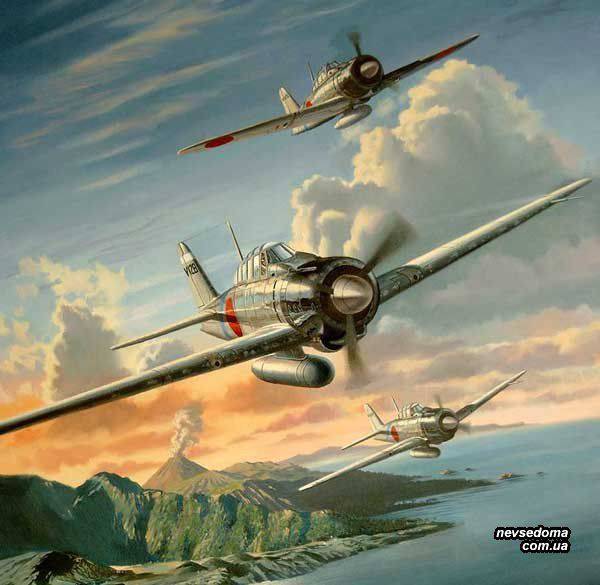
The naval aviation command was delighted with this start of the combat career of the new fighter, especially since Japan was already preparing for a big war in the Pacific. The main rival of the Land of the Rising Sun over the vast ocean expanses were considered the United States.
Although both countries have not yet been at war, the Americans have already received the first information about the secret fighter. In China, a group of foreign volunteers fought, among them were US citizens. Klair Shennot provided assistance to the organization of the Air Force Chiang Kai-Shek, and it was he who first reported to the homeland about a very effective Zero. But fragmentary and sometimes contradictory information on the US army leadership did not have the desired effect. The more unexpected were the advantages of the Zero, compared with the American fighters, after the start of a full-scale war in the Pacific.
While the first serial fighters fought in China, the firm "Mitsubishi" made a number of improvements. With 22-th cars used reinforced wing spar. And starting with the 65 fighter, the manual wingtip folding was foreseen. At the same time, the span was reduced to 11 m - the standard width of the deck elevator on Japanese aircraft carriers.
The planes were built at the Mitsubishi plant in Nagoya, and since November 1941 have been connected to production, workshops have been connected to Okawa. By the beginning of the war with the United States, Japanese aviation was armed with about four hundred A6М2 fighter jets.
The fleet of the Land of the Rising Sun delivered its first blow to the main US naval base in the Pacific Ocean Pearl Harbor in Hawaii. Admiral Nagumo's squadron consisting of six aircraft carriers and escort ships in October 1941, headed for Pearl Harbor. Early in the morning of December 7, the compound approached Oahu and aircraft carriers began to turn in the wind, and work on the decks began to boil on the decks. At 6 hours, Mitsuo Futida lifted the first wave of aircraft into the air. The 100 Bomber Nakjima B5N2 and 51 Aichi Dive D3A1 covered the 42 А6М2, led by Lieutenant Schiecher Itaya. "Zero" in addition to protecting the bombers, had to work as an attack aircraft, suppressing anti-aircraft installations and attacking various ground targets.
The Americans were taken by surprise and Nagumo heard on the radio the excited voice of Futid: "Torah ... Torah ... Torah ..." The sudden attack was a success. Almost without resistance, Japanese bombers and torpedo bombers began methodically shooting ships and various military targets. “Zero” also contributed to the success, having managed to bring down four “Americans” in the air. The raid of the first wave was more than successful. Among several shot down "Japanese" was only one "Zero", received a projectile hit from ground fire.
The second group, which took off in an hour, was met by the Americans in a more organized manner. Here, 54 B5N2 and 78 D3A1 accompanied 36 А6М2 under the command of Lieutenant S. Shindo. "Zero" confirmed the reputation of an effective combat vehicle, destroying on the ground 30 American aircraft and 12 - in the air. The Americans chalked up eight A6M2. These were the first shot down "Zero" in real fights fighters.
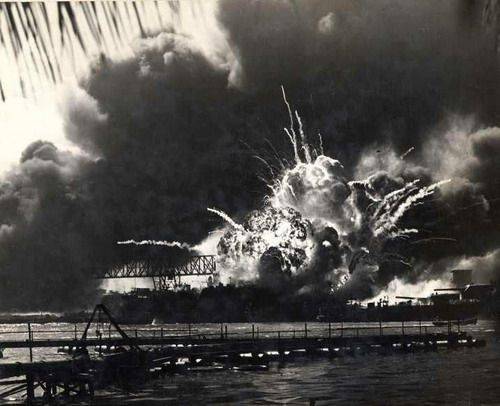
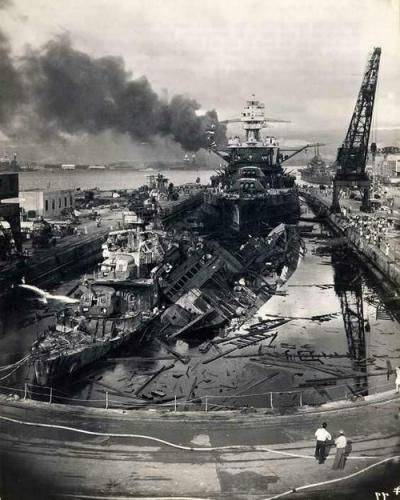
But these losses were very small compared to the damage suffered by the United States. In just two hours, the Americans lost a whole line fleet, 300 planes and 2500 human lives. And on the Japanese aircraft carriers did not return all 29 aircraft. The success of the attack on Pearl Harbor predetermined the rapid advance of Japan in all parts of the Pacific Ocean. Having seized a strategic initiative, the army of the Land of the Rising Sun occupied, almost without resistance, one island after another.
19 February 1942 fighters from four Japanese aircraft carriers took part in a raid on the Darwin base in northern Australia. Eight P-40E USAFs were shot down in the air by the victims of the maneuverable and speedy Zero. Two more P-40Es and thirteen other planes, burned on the ground, were added to them.
On April 9, the 1 th air fleet of Admiral Nagumo from three aircraft carriers attacked the English cruisers Dorsetshire and Cornwall 300 miles from Colombo, sinking them in just 20 minutes. Four days before this event, “Zero” met in the air a mix of British aircraft, confirming their advantage. Japanese aces added to the list of downed 15 machines with Hurricane, six Swordfish torpedo bombs and four Fulmar light bombers, with their own casualties of one А6М2 and six D3A1 dive bomber.
The allies had nothing to oppose the nimble and high-speed “Zero”. As for the British, the first fighting with the new Japanese cars caused them to shock. The British pilots, confident that their "Buffalo" and "Hurricane" in their characteristics are superior to any enemy fighter, began to suffer heavy losses. The British command immediately sent to London a request for the supply of the latest Spitfires. However, the British did not have enough of these machines to fight the German fighters in the sky of the metropolis. Pilots in Singapore and Burma had to fight the Japanese on outdated aircraft. It is not surprising that in the first year of the war the fighters of the Imperial Fleet reigned supreme in the sky of the Pacific Ocean. In addition, in conditions of low opposition from Allied Aviation, the Zero was effectively used to work on ground targets. This was facilitated by the presence on their board of two 20-millimeter cannons, while the Anglo-American cars carried only machine guns. It is not surprising that American and British pilots simply began to avoid air battles with the invulnerable A6M2. Japanese designers could rightly be proud of their offspring.
“After the start of the war, we learned that, although the Zero fighter appeared in battles in China more than a year before December 1941, the allies were completely unaware of his fighting qualities. Months have passed since the beginning of the fighting in the Philippines, but the Allies still have not learned the real capabilities of the Zero. We can judge the effectiveness of our Zero by the fact that in all our operations during the first months of the war Zero fighters of our naval and land-based forces destroyed 65 percent of all aircraft that the enemy lost ... We realize that in Pearl Harbor, as well as in the Philippines and in the Dutch East Indies, we would not have been able to win our victories at sea, on land and in the air, if we had a fighter with lower characteristics than the Zero, ”wrote Masatake Okumiya.
Possessing a motor with a capacity of less than that of any fighter of the allies, the Zero significantly outnumbered enemy vehicles in speed and maneuverability due to a well-thought-out and lightweight design. The Mitsubishi fighter successfully combined its small size and low unit load on the wing with a not very powerful engine, cannon armament, and excellent machine behavior in the air, including an exceptional range. Only with the advent of Mustangs and Spitfires, Hellcats and Corsairs did US and British pilots begin to fight Zero.
The Japanese made great use of the high range fighter. Two regiments of naval aviation А6М2 were based on the Formosa airfield in Taiwan. From here, Japanese aircraft could fly to US bases in the Philippines. 7 December 1941, at the same time as a strike on Pearl Harbor, Japanese bombers appeared under the Zero cover over Iba and Clark airfields. The raid was successful - half of the “flying fortresses” of the Boeing B-17 burned down on the ground, and a large number of American fighters were shot down in the air. Not one Zero bomber was destroyed, and its own losses amounted to seven А6М2.
The next day, the Japanese paid only 12 Zero for the destruction of 35 Р-11 and 40 Р-6, while Saburo Sakai managed to knock B-17 in the air for the first time. By the middle of December there were practically no surviving American planes left in the Philippines, and the Zero had to continue combat missions as ground attack aircraft.
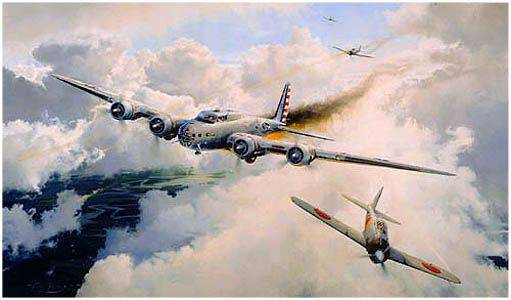
Before the attack on Pearl Harbor, Japan did not have enough aircraft carriers and the naval aviation headquarters planned to use float machines to support the landing on remote Pacific Islands. Seaplanes are easily placed in the lagoons and coves of atolls. To replace the Aichi E13А1 and Mitsubishi F1М2 float planes that were in service, they decided to build a modern hydrofighter. At the end of 1940, the company Kavanishi received an order for it, but its N1K1 entered the combat units only in the middle of 1943.
Seeing that the company is not in time, the military offered to build a float fighter based on the Zero. Such a machine was built at the firm "Nakajima", which participated in the serial production of "Zero". The first drawings on the drawing boards appeared in February 1941, and the prototype made the first flight in December of the same year. Float fighter received the designation A6M2-N.
Its design and weapons remained unchanged, only abandoned the now unnecessary system of folding tips. Instead of a wheeled chassis, a central float was installed on the bottom of the pylon and the V-shaped brace and two underwing wings - on single stands. Additional tanks were placed in the central float and the fuel system capacity grew from 525 l to 880 l.
The tests were quite successful, and at the beginning of 1942, the A6M2-N entered service under the designation "Sea Float Fighter Type 2 Model 11". The allies came up with a float "Zero" his name - "Ruth". With an impressive supply of fuel, the "Ruth" had a huge range and, with normal take-off weight, the 2460 kg could accelerate to 435 km / h.
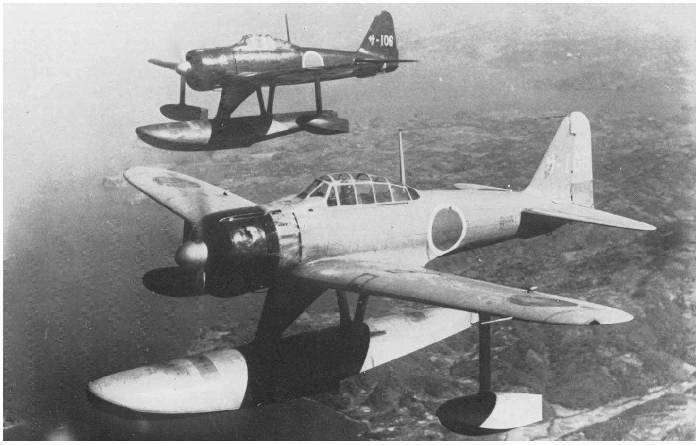
The Zero float brother was actively used at the front, providing, for example, a landing on the Aleutian and Solomon Islands in the summer of 1942. And at the end of the war, the A6M2-N was already used as an air defense fighter. One regiment of "Ruth" was based on the water surface of Lake Biwa, defending the island of Honshu from the attacks of American bombers.
It was only in the spring of 1942 that the USA won its first victory in the war in the Pacific. 7 May in the Coral Sea for the first time in battle face to face met the aircraft carriers of the two warring countries. “Yorktown” and “Lexington” were opposed by “Soho”, “Sekaku” and “Dvukikaku”. Zero did a great job here, shooting down a lot of American planes. But the fighters were unable to protect Soho from the enemy torpedo bombers, which became the first sunken aircraft carrier of Japan in World War II. Sekaku suffered serious damage, while the Americans lost Lexington.
Successful for the Japanese turned out to be an operation to seize the Aleutian Islands in the summer of 1942. The landing of the assault force was supported by a combination of three aircraft carriers — Riuyo, Zuiho, and Dzhunyo — on board of which were 42 A6М2. Admiral Nimitz, without getting involved in a serious battle, led the main forces to the south, allowing the Japanese to seize Atta and Kysk with minimal losses. Only one “Zero” did not return to the deck of the “Riuio”, but this shortage turned out to be much more serious than it seemed at first glance. Tadayoshi Koga during the combat departure was damaged by anti-aircraft fire and was forced to board the fuselage in the swamp on the island Akutan. Five weeks later, the Americans found the damaged A6М2. The plane was loaded onto a ship and taken to San Diego, where it was restored to a flying state. The tests helped to know the advantages and disadvantages of the Zero and to develop recommendations for the Allied pilots on how best to deal with them.
In August 1942, Admiral Nimitz decided to go on the offensive and take away the islands of Guadalcanal and Tulagi from the Japanese. In the battle of the islands, victory remained for the United States, although the Japanese fleet responded with the destruction of the Wasp and the Hornet for the sunk Riuio.
Over Guadalcanal, American pilots for the first time encountered a new modification of the Zero - A6MZ. Elaboration of a fighter with the engine "Sakai 21" hp 1130 started in 1941 year. Externally, the aircraft was easily distinguished by a wing with straightened tips. They refused to fold them, because the scope was reduced to 11 m. Technologists at the plants were most pleased with the innovation - the manufacture of the wing was greatly simplified.
Due to the reduced wing, the maneuverability of the A6MZ slightly deteriorated, but the speed characteristics increased. "Hamp" - so the Allied pilots dubbed the fighter with the "chopped off" planes, accelerated to 544 km / h (the maximum speed of А6М 2 - 534 km / h). Later on, parts of A6МЗ returned to the long wing with folding tips.
The 904 copy of the A6MZ was finally eliminated from the straightened tips, probably not to confuse its fighters with the Wildcat, which also had a characteristic contour with the “chopped off” wings.
Since it was almost impossible to conduct a maneuverable battle with A6M, the Allies used the “hit-run” and “Tag pattern” tactics to fight it. The "Trench Pattern" uses at least two fighters: the master and the slave, flying at a certain distance. When the “Zero” comes to the tail of one of the planes, the pair’s cars begin to turn towards each other. If the Japanese fighter continues to attack, then it hits the line of fire of another fighter. The use of two-on-one tactics yielded results in the battles in the Coral Sea and in Midway, and also helped to save the position of the Allied forces until new types of fighter aircraft were obtained.
In February, the Allies began using the Spitfire MKV and Voute F1943U-4 Corsair in February 1. In July, they were joined by the Republican P-47D Thunderbolt, and in August by the Grumman F6F-3 Hellcat. These planes were no longer inferior to the Zero in speed, although the Japanese had an advantage in maneuverability.
During the battles, a number of flaws in the Zero fighter jets showed up. First, their vitality was not high. The fighter had unprotected tanks, and many fighters due to the loss of fuel from the punched tanks could not reach their aircraft carriers and died at sea. In addition, the Japanese pilots were not protected by armor, and if the machine that was attacked by the enemy (despite the fact that the Allies' planes were armed only with machine guns) could still be held in the air, the pilot, who had received a series of bullets in the back, could hardly have to manage it. Another weakness of the Zero was the dive speed limit. Therefore, the Allies often escaped from attacking their Japanese fighter by a sharp decline. These restrictions were caused by insufficient wing strength.
The naval aviation headquarters foresaw a similar situation at the beginning of 1942, developing the requirements for a new deck fighter. However, the Japanese designers could not create a complete replacement for the Zero. Nevertheless, the firm "Mitsubishi" built two new marine fighter. The “Raiden” J2M1 prototype first took off in March 1942 of the year. Its modification J2M3 began combat sorties in the fall of 1944, but before the end of the war they managed to release only about 500 fighters. And the experienced A7M1 "Rippu" was tested when Japan surrendered. Therefore, the aircraft of the Imperial fleet could only hope for further modernization of the already aging “Zero”.
At the end of 1942, at the 1-m naval arsenal in Yokosuka, two А6М2 were equipped with turbocharging. However, the unreliable operation of complex units did not allow the A6M4 series to be deployed with such motors. On the conveyor appeared option under the following index - А6М5. Having the same engine "Sakae 21", as well as A6MZ, the fighter was distinguished by guns with an elongated barrel, an extra pair of 45-liter tanks and a thickened wing skin. The last revision allowed to increase the speed of a dive to 660 km / h.
Soon they began assembling the A6М5 sub-version with an even more advanced wing design - the dive speed increased to 740 km / h. The drum feed system for cartridges was replaced by a tape, and the ammunition rose to 125 shells on the barrel. On the modification A6М5b first appeared armored glass and a neutral gas system. Strengthened and armament, replacing one 7,7-mm fuselage machine gun on a large-caliber (13, 2 mm).
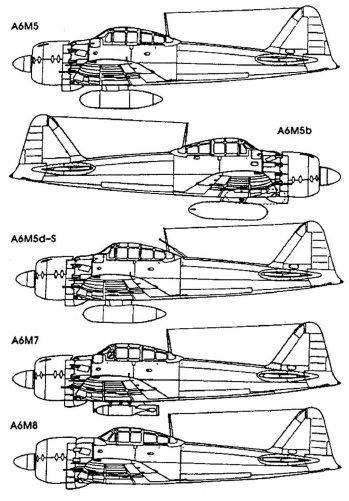
Unfortunately for the Japanese, newcomers came to replace the experienced pilots who were driven out, and besides the Allies were able to repeatedly increase the air force in the region. Fighting went with the overwhelming numerical superiority of the enemy. So over the island of Leyte in the Philippine Sea against 52 "Zero" fought 565 "Hellcat".
At the end of the war, the military leadership of the country offered to use suicide bombers. The Zero, with its high speed, was ideal for kamikaze pilots. At the beginning of the 1944 of the year, the A6М5 provided for the suspension of the 250-kg bomb, from which the bomber departed on the last flight.
One of the first massive kamikaze operations was held in October 1944 of the year, during the battle off the islands of Leyte and Samar. October 25 strike "Zero" hit the carrier connection of Admiral C. Spruyens. At 7.40 in the morning, two A6М5 rammed the deck of the aircraft carrier Santi, destroying the 43 man and causing a fire. Another “Zero” dived on “Suvani”, breaking through the aft lift. The fire was quickly extinguished, and the aircraft carrier remained afloat, but no longer participated in the battle. The next victim of the kamikaze was "St. Lo". After ramming the Zero on an aircraft carrier, bombs and torpedoes were detonated. The destruction turned out to be very significant, and soon, enveloped in flames, the ship sank.
Suicide bombers were also actively used in the battles for Okinawa. In the spring of 1945, the Japanese conducted Operation Kicusius (Chrysanthemums). Northwest of Okinawa, planes attacked the destroyer Mannert Abel. One Zero was hit by anti-aircraft fire and, falling on the superstructure, exploded - a bomb suspended under the fuselage detonated, intensifying the destruction. A minute later, the destroyer was finally finished - the Oka and Mannert Abel crashed into the deck. Another Zero rammed a support ship, injuring four sailors, but the damaged ship remained afloat. Kamikaze sorties continued until August 1945, and brought a lot of trouble to the Americans.
And the designers did not stop the further modernization of the Zero. At the end of the war, A6М5с appeared, differing from A6М5b with a pair of additional 3 Type 13,2 wing guns (10 mm). The pilot received an armored seat, the fuel tank behind the cabin became protected, and under the wing holders appeared for ten 50-kg bombs or two missiles according to 6 kg. The AbM6c variant (identical in A5М31c equipment) was equipped with the Sakae 1130 engine (10 hp) with an injection system into the water-methanol mixture cylinders, which allowed a short-term increase in power by XNUMX%. But due to technical problems with the engine, only a few such fighters were built.
"Sakae 31" with injection planned to install on the A6М7 fighter-bomber with under-bomber holder and suspension units under the wing for a pair of 350-liter tanks.
Several "Zero" converted into combat units into night fighters, assigning them the unofficial index A6M5d-S. An additional 20-mm cannon was fired behind the cockpit, firing up and down, and airplanes were used at the end of the war to protect the Japanese islands from "flying fortresses."
The latest and most advanced version of the "Zero" was to become A6М8 with the engine "Kinsay 62" in 1500 hp With the pilot's armor, protected tanks and suspensions as on А6М7, the fighter had improved characteristics - the maximum speed reached 575 km / h, and the set time of 6000 m - 6 min. 50 with. This allowed the A6M8 to fight the Hellcats on equal terms, but none of the 6300 fighters ordered by the order were made because of the beginning of the collapse of the Japanese aircraft industry. For example, in February 1945, 117 B-29 heavy bombers participated in the strike at the Mitsubishi aircraft factory in the city of Nagoya. Naturally, in similar conditions, aircraft factories simply could not work normally and there was no opportunity for the mass production of A6М8. However, the dying Japanese industry still continued to produce Zero aircraft up to August 1945, producing a total of 10449 machines of this type.
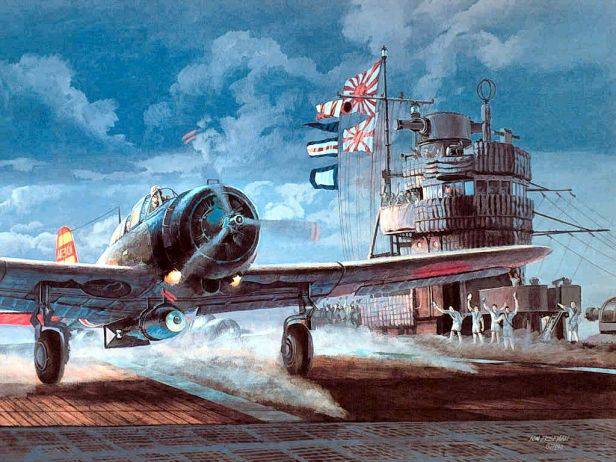
The end of the war in the Pacific Ocean put an end to the combat career of the Zero. Thus ended the long flight life of the legendary Zero, undoubtedly the best fighter in Japan in World War II.
Sources:
Haruk A. "Zero". The best deck fighter. M .: Eksmo, Yauza, 2010. C. 6, 10-20, 25-31, 35-39, 45-48, 98-106.
Bakursky V., Zhirnova N. Aviation of Japan in the Second World War. M .: Publishing Department TsAGI, 1996. C. 55-59.
Bakursky V., Novikov N. Japanese Aircraft. // Aviation and cosmonautics. 1994. No.1. C. 11-12, 16-18.
Kotelnikov V. Fighters of the Second World War (1939-1945). CH 2. M .: Aviam, 1994. C. 22-27.
Kolov S. Mitsubishi "Zero". // Wings of the Motherland. 2000. No. 6. C. 27-31.
Ivanov S. А6М “Zero” // War in the air. 2001. No.3. C. 2-12, 20-28, 61-63.
Okumiya Masatake. Zero! The history of the battles of the air forces of Japan in the Pacific. 1941-1945. M .: Tsentrpoligraf, 2003. C. 12-14, 18-28, 36-41.
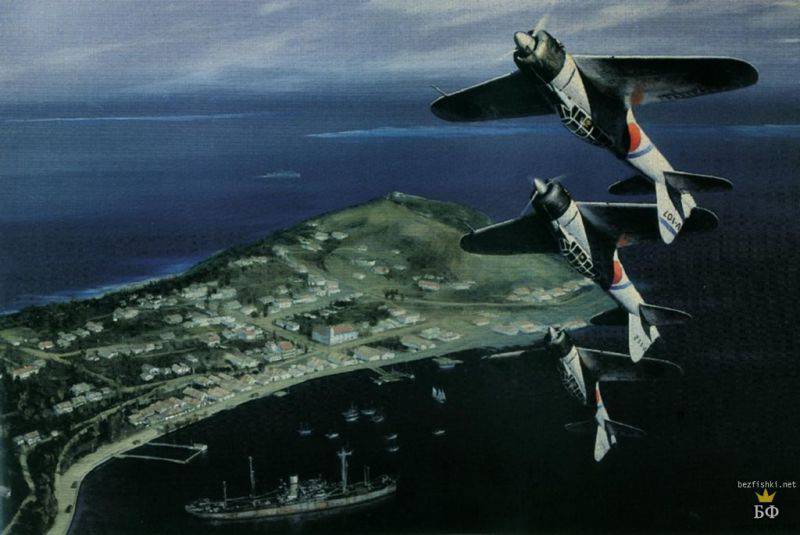
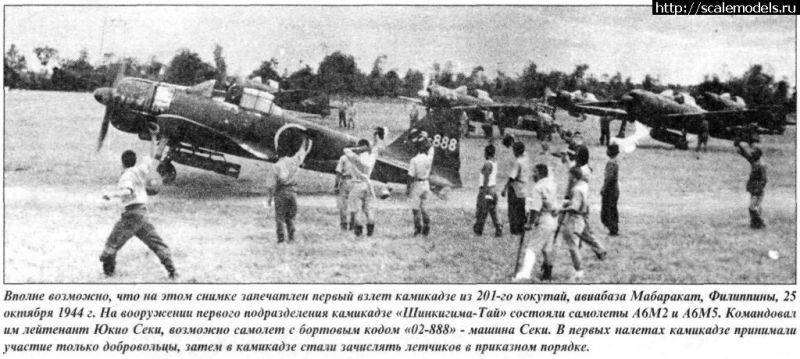
Information